
behavior3lua
behavior tree for lua
Stars: 106
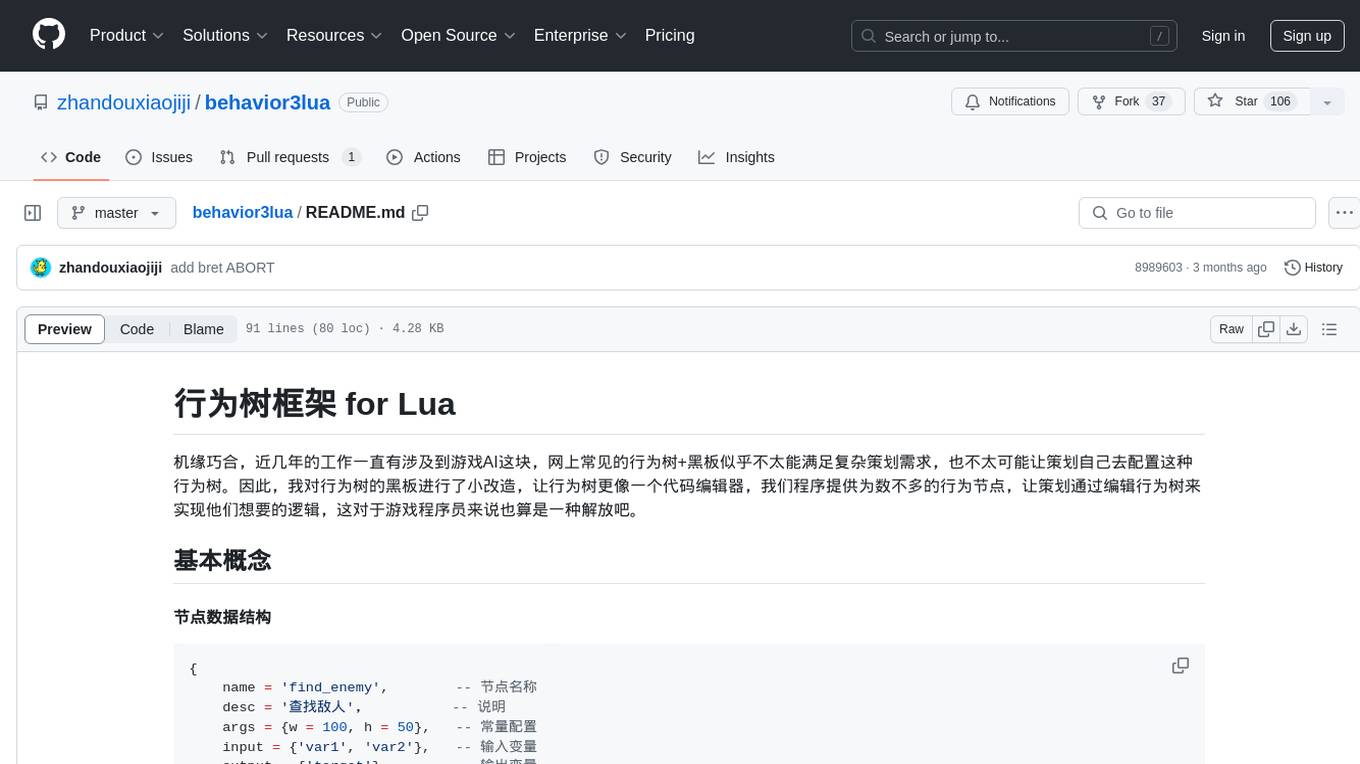
Behavior3Lua is a Lua framework for behavior trees in game AI. It provides a modified blackboard system where behavior trees are designed like code editors, allowing game designers to configure logic through editing trees. The framework offers various node types for creating complex AI behaviors, freeing game programmers from manual configuration. It includes composite, decorator, and action nodes, along with an API for creating and running behavior trees. The framework supports running states and provides an editor for visual tree editing. It has been successfully used in multiple projects for different game genres, enabling designers to create sophisticated AI and logic systems.
README:
机缘巧合,近几年的工作一直有涉及到游戏AI这块,网上常见的行为树+黑板似乎不太能满足复杂策划需求,也不太可能让策划自己去配置这种行为树。因此,我对行为树的黑板进行了小改造,让行为树更像一个代码编辑器,我们程序提供为数不多的行为节点,让策划通过编辑行为树来实现他们想要的逻辑,这对于游戏程序员来说也算是一种解放吧。
{
name = 'find_enemy', -- 节点名称
desc = '查找敌人', -- 说明
args = {w = 100, h = 50}, -- 常量配置
input = {'var1', 'var2'}, -- 输入变量
output = {'target'}, -- 输出变量
children = {} -- 子节点
}通常是固定值,比如范围,类型之类的
因为节点之间都有相互的影响,比如这个节点可能会用到上一个节点所产生的数据,所以大多数行为树设计者都提供一个数据结构来记录行为树的运行状态,称之为“黑板”。
我偷换了个概念,把节点当成一个function来执行,如上面一个节点定义的input={'var1', 'var2'}意思是在执行节点前从黑板里把var1和var2这两个变量取出来,作为参数传进去,在节点执行完后把结果返回,写到target这个变量上。整个过程就像下面这段伪代码:
function find_enemy(var1, var2)
local w, h = args.w, args.h
// do find enemy in range w, h
...
return target
end上面这个节点执行完,黑板上target这个变量就写上了查找到的目标,而后面的节点就可以使用target这个变量作为input了。
{
name = 'attack',
desc = '攻击敌人',
args = {skill = 101},
input = {'target'},
}- SUCCESS 成功
- FAIL 失败
- RUNNING 正在运行
- ABORT 中断执行
- Parallel 并行执行, 执行所有子节点并反回true
- Sequence 顺序执行,执行所有子节点直到返回false
- Selector 选择执行,执行所有子节点直到返回true
- Not 取反
- AlwaysSuccess
- AlwaysFail
- Wait 等待一段时间后继续执行
- MoveToTarget 移动到目标
- GetHp 获取生命值
- Attack 攻击目标
- new 创建新的行为树对象
- run 执行一次tick
- set_var 设置变量
- get_var 获取变量
做行为树始终绕不开一个问题,就是running状态,如果一套行为树方案没有running状态,那它只能用来做决策树,而不能做持续动作。要想实现running状态,关键是如何用上一次运行的节点恢复起来。行为树的节点调用很像程序的调用栈,其实对复合节点稍做改造即可实现:
- 只要是有任意子节点返回的是RUNNING, 立即返回RUNNING。
- 运行节点前把节点压入栈,如果该节点返回RUNNING,则中断执行,等待下次tick唤醒,如果返回的是SUCCESS或FAIL,则出栈,继续往下执行。

我用阿里的g6图形库开发了一个通用的行为树编辑器,并用electron打包成exe版本,目前还比较简陋,感兴趣的同学可以关注一下 behavior3editor

- 导出节点定义
lua export_node.lua
- 运行测试
lua test.lua
我以前的做法是,把每一tick所有的节点执行结果都发给编辑器然后在编辑器上展示,非常详细,但实际应用却很鸡肋,太多冗余的数据让人眼花缭乱。我目前的做法是在编辑行为树的时候,把需要调试的节点打上标志,当行为树运行到这个节点的时候,打印这个节点相关的日志,比如时间/帧数,执行结果,及所有变量的值。
这套方案我已经在好几个项目中使用过,动作,卡牌,MOBA,MMO类都有,提供三四十种节点,基本上策划可以自己配置出一套很复杂的AI,当然还可以使用在技能系统之类的,需要更直观的逻辑表现的系统。这仅仅是一种思路,各位路过的大神,有啥建议或看法,欢迎Issue或者加群交流(Q群:644761605)
For Tasks:
Click tags to check more tools for each tasksFor Jobs:
Alternative AI tools for behavior3lua
Similar Open Source Tools

behavior3lua
Behavior3Lua is a Lua framework for behavior trees in game AI. It provides a modified blackboard system where behavior trees are designed like code editors, allowing game designers to configure logic through editing trees. The framework offers various node types for creating complex AI behaviors, freeing game programmers from manual configuration. It includes composite, decorator, and action nodes, along with an API for creating and running behavior trees. The framework supports running states and provides an editor for visual tree editing. It has been successfully used in multiple projects for different game genres, enabling designers to create sophisticated AI and logic systems.
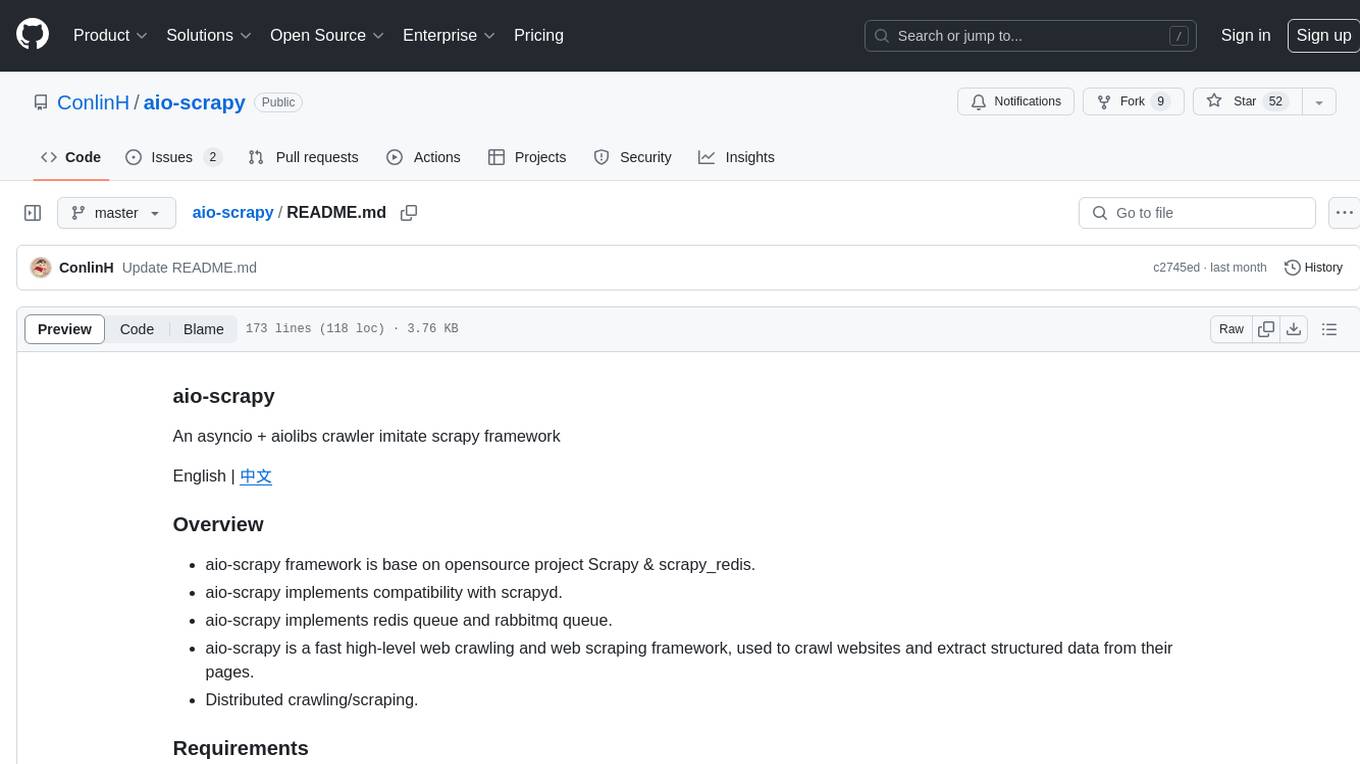
aio-scrapy
Aio-scrapy is an asyncio-based web crawling and web scraping framework inspired by Scrapy. It supports distributed crawling/scraping, implements compatibility with scrapyd, and provides options for using redis queue and rabbitmq queue. The framework is designed for fast extraction of structured data from websites. Aio-scrapy requires Python 3.9+ and is compatible with Linux, Windows, macOS, and BSD systems.
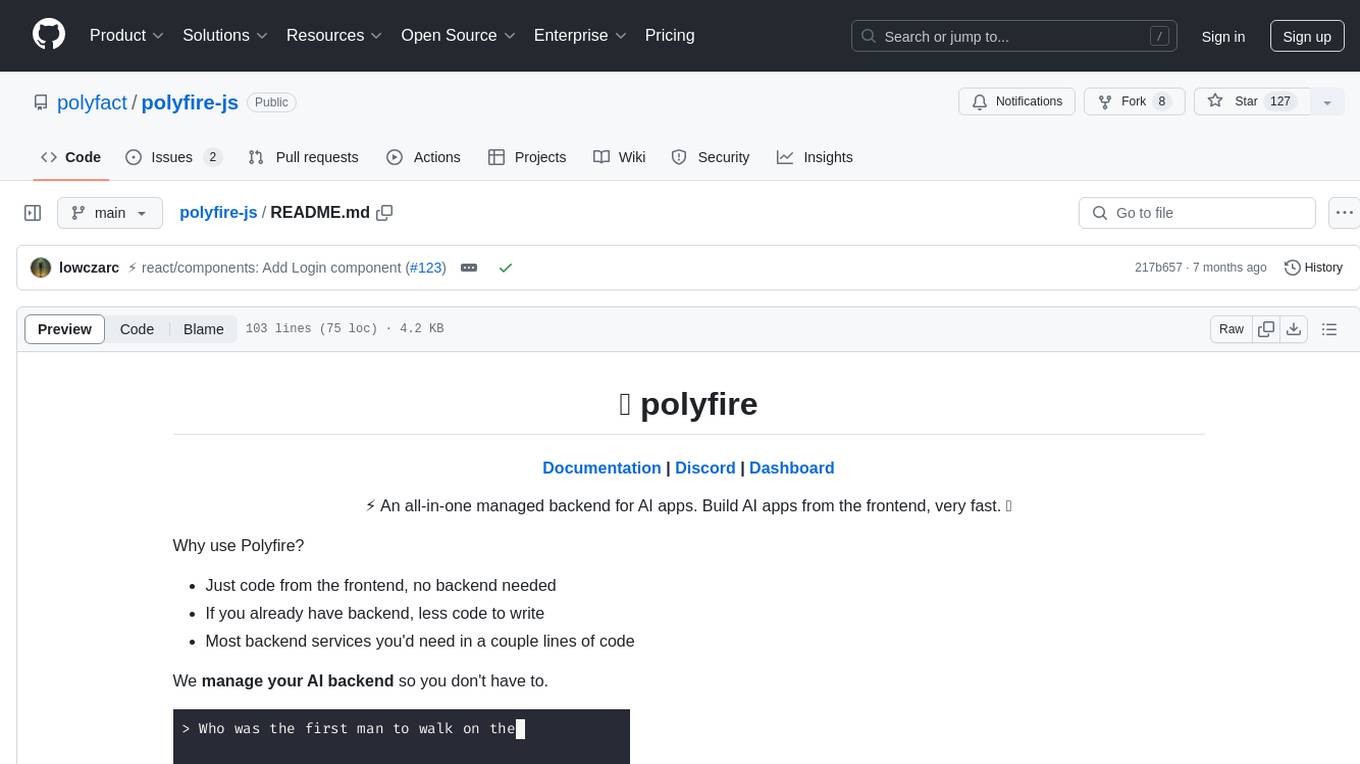
polyfire-js
Polyfire is an all-in-one managed backend for AI apps that allows users to build AI apps directly from the frontend, eliminating the need for a separate backend. It simplifies the process by providing most backend services in just a few lines of code. With Polyfire, users can easily create chatbots, transcribe audio files to text, generate simple text, create a long-term memory, and generate images with Dall-E. The tool also offers starter guides and tutorials to help users get started quickly and efficiently.

azooKey-Desktop
azooKey-Desktop is an open-source Japanese input system for macOS that incorporates the high-precision neural kana-kanji conversion engine 'Zenzai'. It offers features such as neural kana-kanji conversion, profile prompt, history learning, user dictionary, integration with personal optimization system 'Tuner', 'nice feeling conversion' with LLM, live conversion, and native support for AZIK. The tool is currently in alpha version, and its operation is not guaranteed. Users can install it via `.pkg` file or Homebrew. Development contributions are welcome, and the project has received support from the Information-technology Promotion Agency, Japan (IPA) for the 2024 fiscal year's untapped IT human resources discovery and nurturing project.
ck
ck (seek) is a semantic grep tool that finds code by meaning, not just keywords. It replaces traditional grep by understanding the user's search intent. It allows users to search for code based on concepts like 'error handling' and retrieves relevant code even if the exact keywords are not present. ck offers semantic search, drop-in grep compatibility, hybrid search combining keyword precision with semantic understanding, agent-friendly output in JSONL format, smart file filtering, and various advanced features. It supports multiple search modes, relevance scoring, top-K results, and smart exclusions. Users can index projects for semantic search, choose embedding models, and search specific files or directories. The tool is designed to improve code search efficiency and accuracy for developers and AI agents.
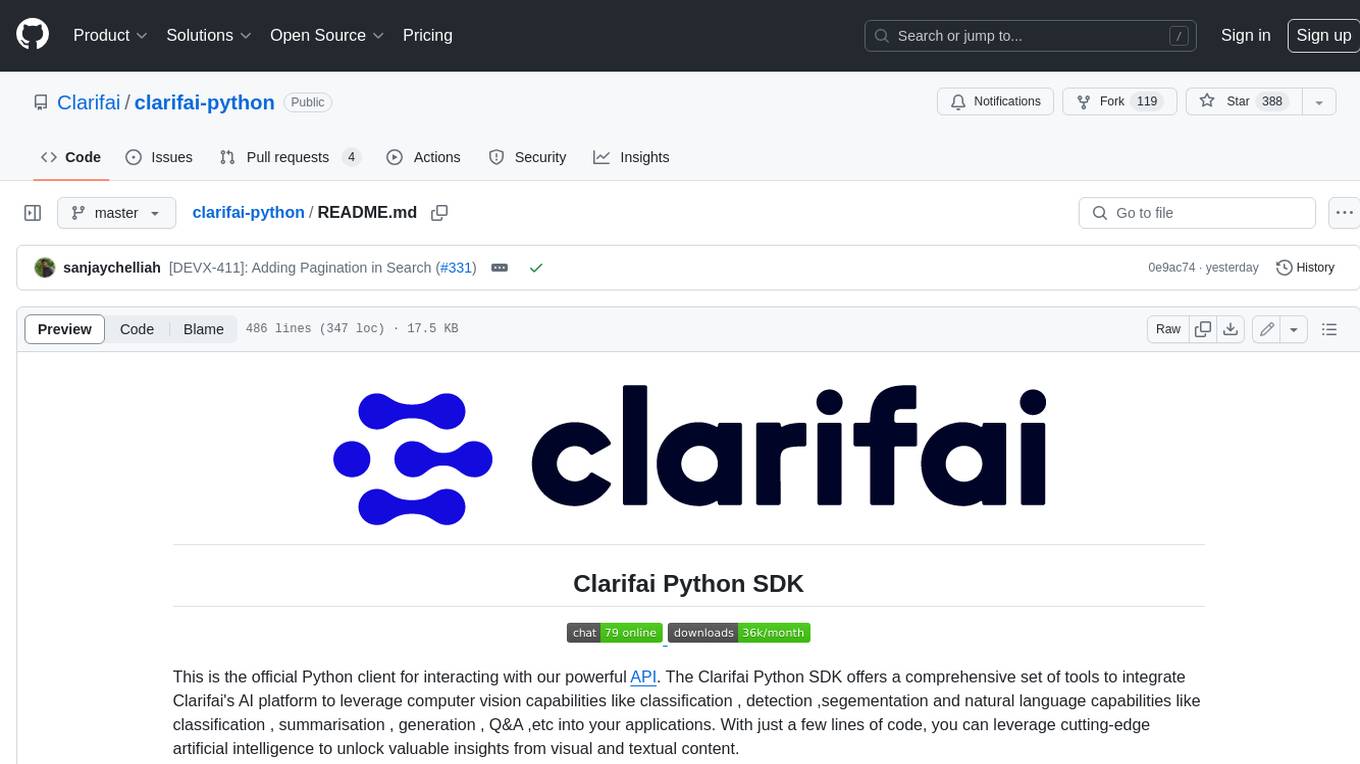
clarifai-python
The Clarifai Python SDK offers a comprehensive set of tools to integrate Clarifai's AI platform to leverage computer vision capabilities like classification , detection ,segementation and natural language capabilities like classification , summarisation , generation , Q&A ,etc into your applications. With just a few lines of code, you can leverage cutting-edge artificial intelligence to unlock valuable insights from visual and textual content.
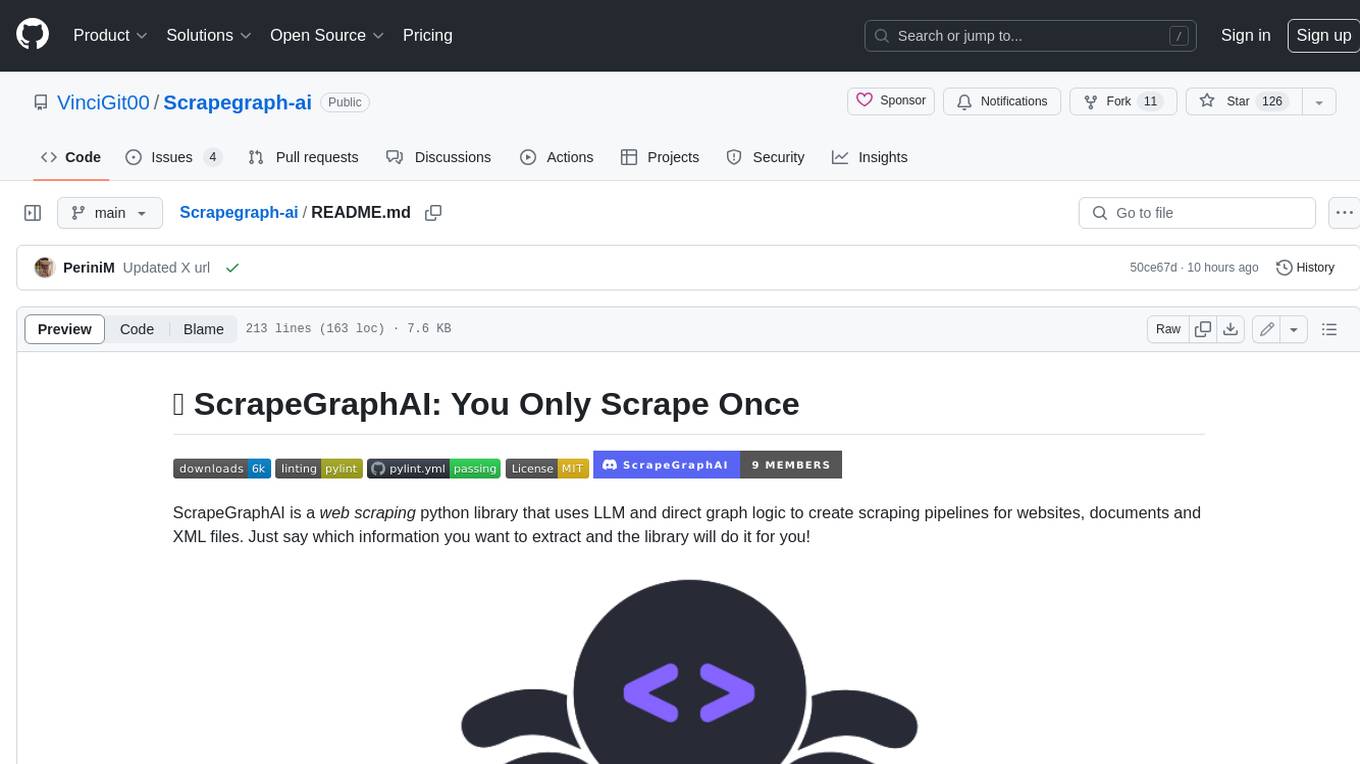
Scrapegraph-ai
ScrapeGraphAI is a Python library that uses Large Language Models (LLMs) and direct graph logic to create web scraping pipelines for websites, documents, and XML files. It allows users to extract specific information from web pages by providing a prompt describing the desired data. ScrapeGraphAI supports various LLMs, including Ollama, OpenAI, Gemini, and Docker, enabling users to choose the most suitable model for their needs. The library provides a user-friendly interface through its `SmartScraper` class, which simplifies the process of building and executing scraping pipelines. ScrapeGraphAI is open-source and available on GitHub, with extensive documentation and examples to guide users. It is particularly useful for researchers and data scientists who need to extract structured data from web pages for analysis and exploration.
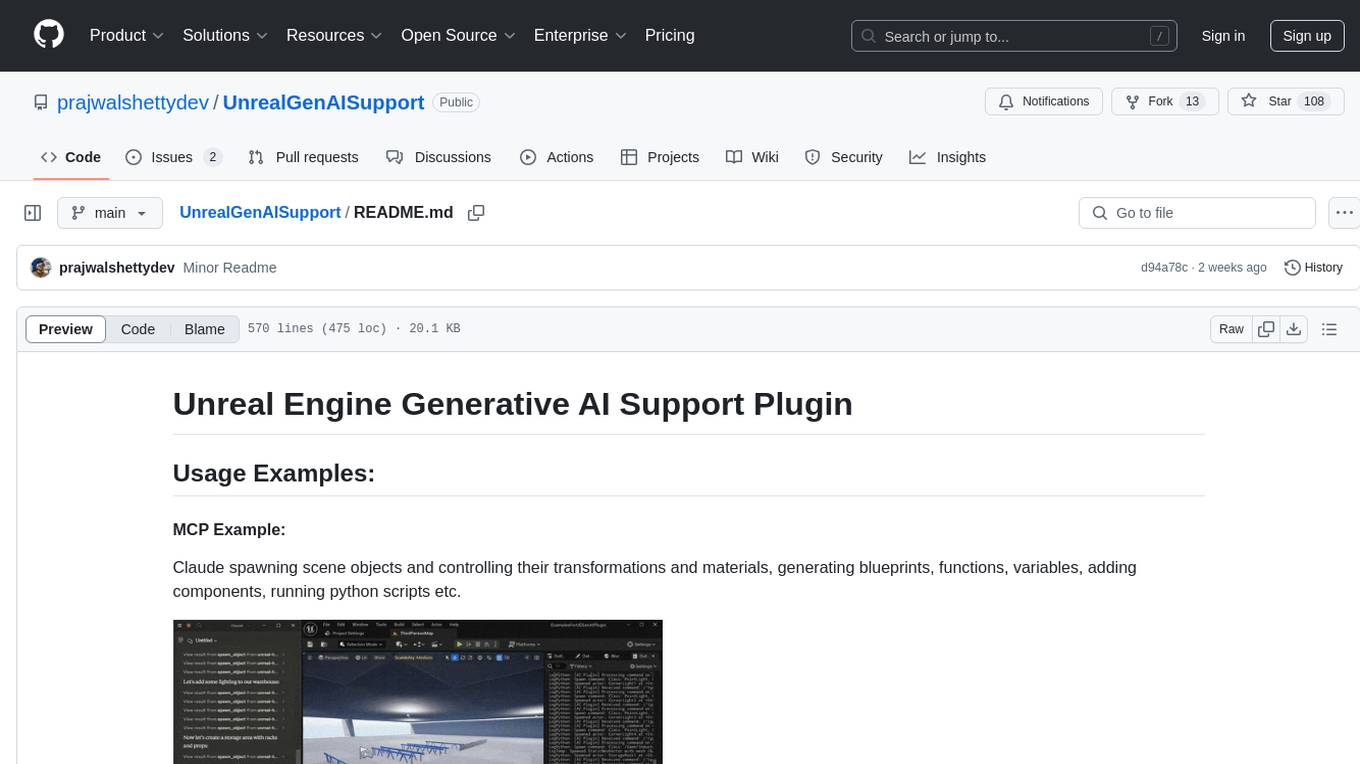
UnrealGenAISupport
The Unreal Engine Generative AI Support Plugin is a tool designed to integrate various cutting-edge LLM/GenAI models into Unreal Engine for game development. It aims to simplify the process of using AI models for game development tasks, such as controlling scene objects, generating blueprints, running Python scripts, and more. The plugin currently supports models from organizations like OpenAI, Anthropic, XAI, Google Gemini, Meta AI, Deepseek, and Baidu. It provides features like API support, model control, generative AI capabilities, UI generation, project file management, and more. The plugin is still under development but offers a promising solution for integrating AI models into game development workflows.

retro-aim-server
Retro AIM Server is an instant messaging server that revives AOL Instant Messenger clients from the 2000s. It supports Windows AIM client versions 5.0-5.9, away messages, buddy icons, buddy list, chat rooms, instant messaging, user profiles, blocking/visibility toggle/idle notification, and warning. The Management API provides functionality for administering the server, including listing users, creating users, changing passwords, and listing active sessions.
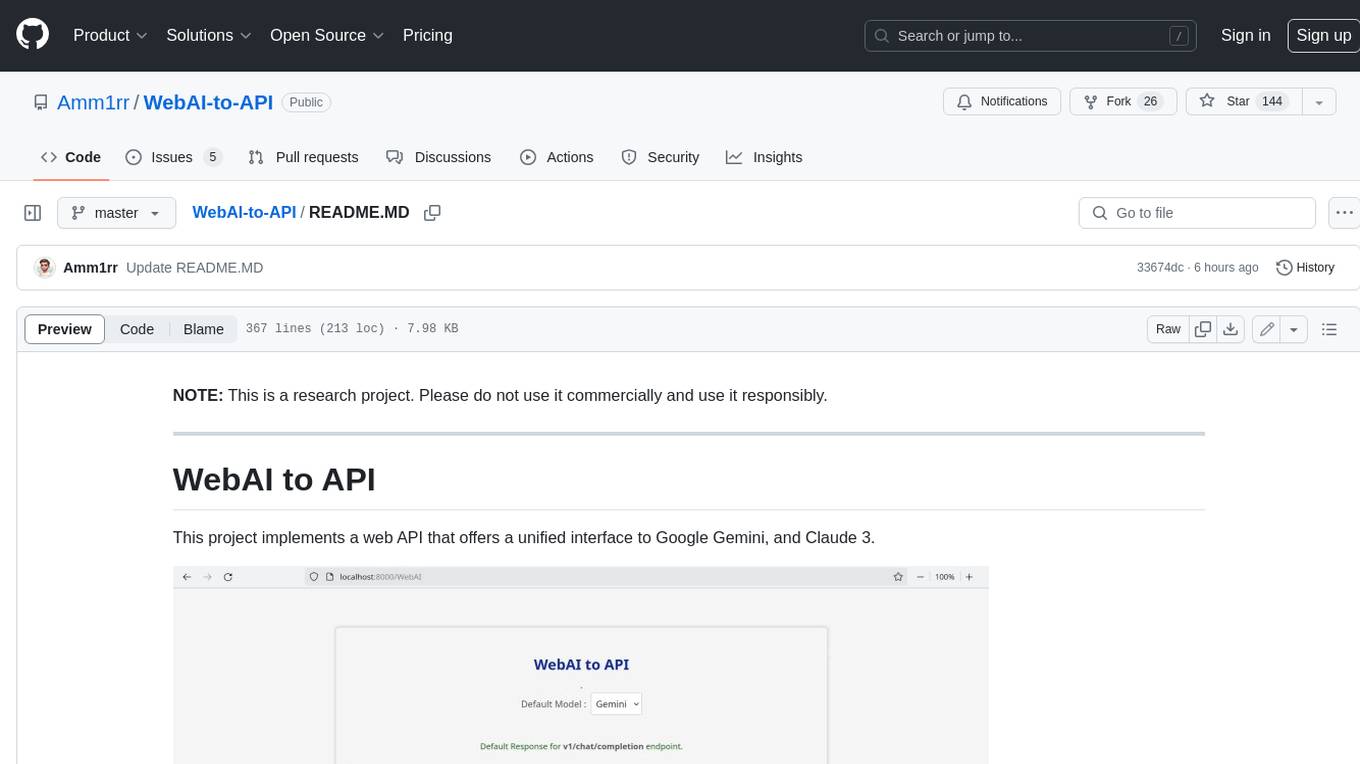
WebAI-to-API
This project implements a web API that offers a unified interface to Google Gemini and Claude 3. It provides a self-hosted, lightweight, and scalable solution for accessing these AI models through a streaming API. The API supports both Claude and Gemini models, allowing users to interact with them in real-time. The project includes a user-friendly web UI for configuration and documentation, making it easy to get started and explore the capabilities of the API.
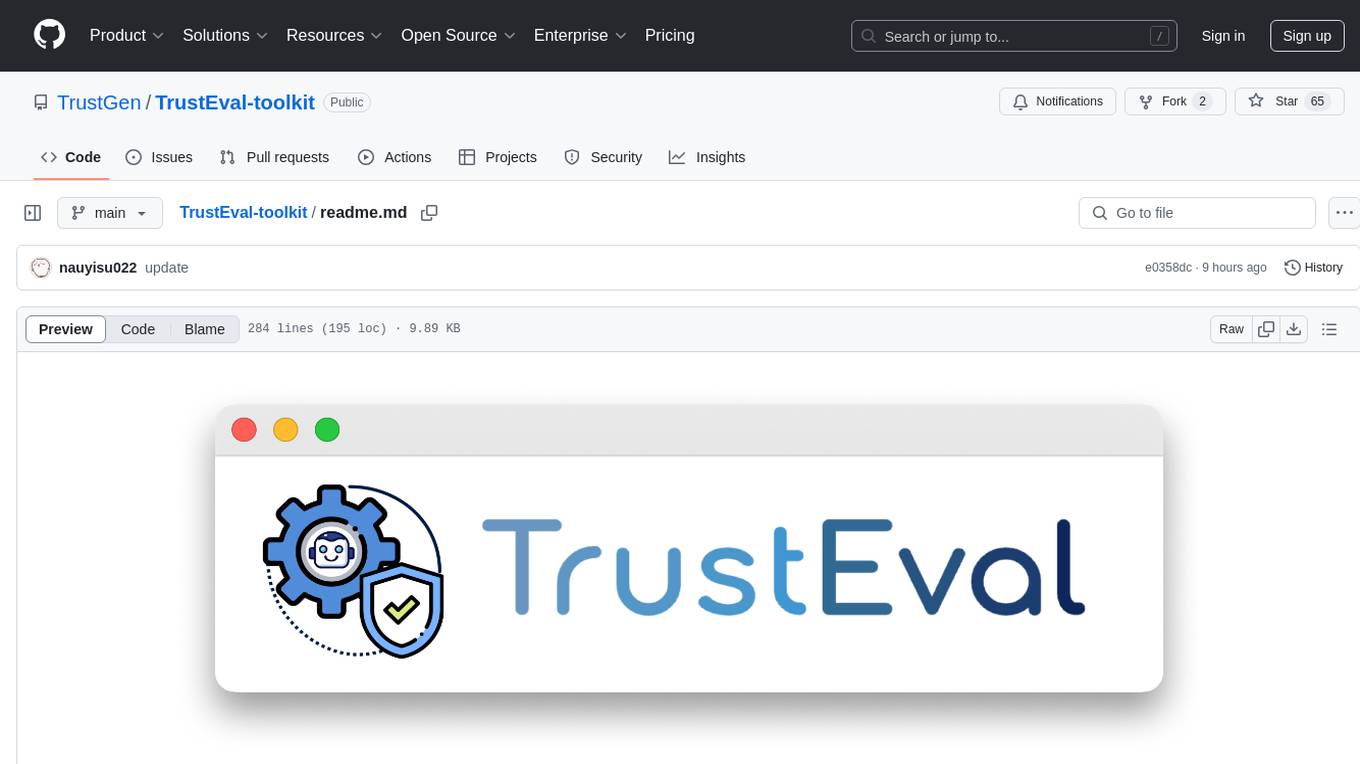
TrustEval-toolkit
TrustEval-toolkit is a dynamic and comprehensive framework for evaluating the trustworthiness of Generative Foundation Models (GenFMs) across dimensions such as safety, fairness, robustness, privacy, and more. It offers features like dynamic dataset generation, multi-model compatibility, customizable metrics, metadata-driven pipelines, comprehensive evaluation dimensions, optimized inference, and detailed reports.
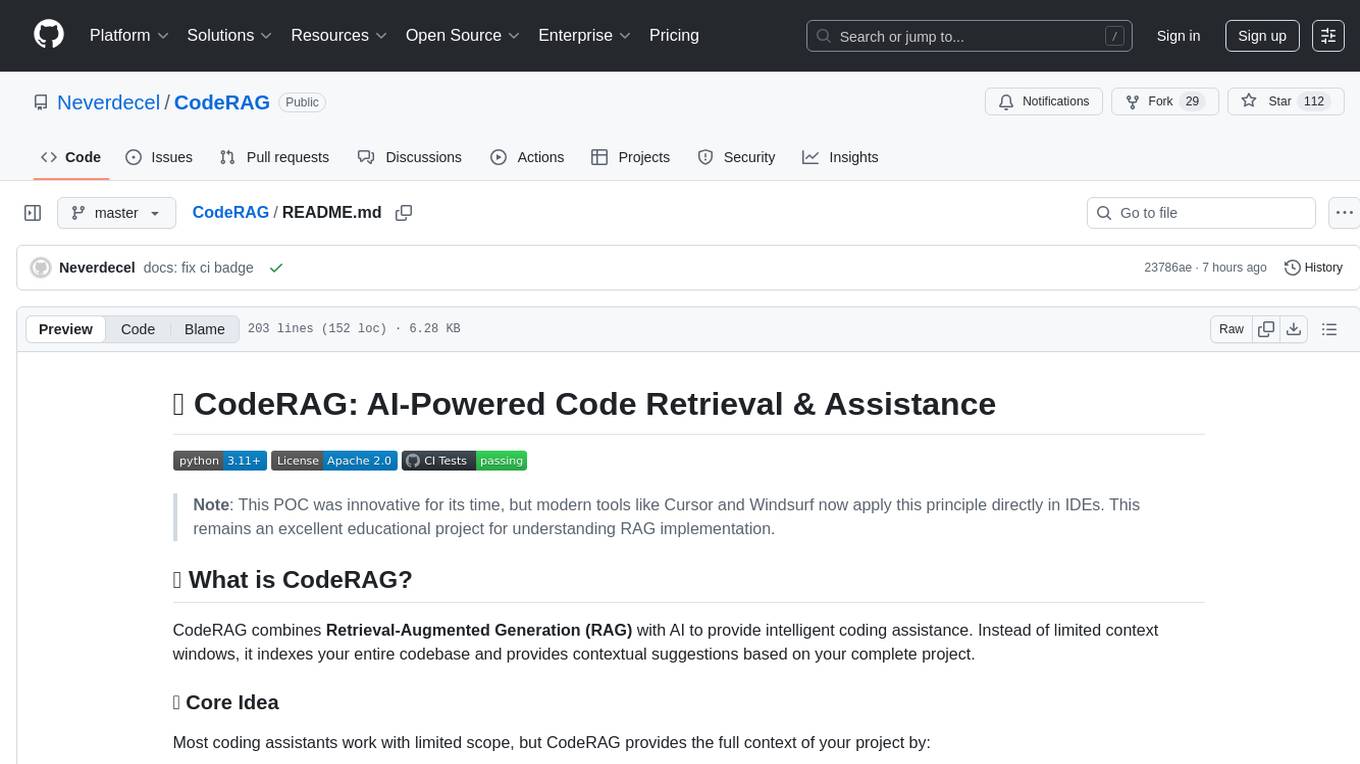
CodeRAG
CodeRAG is an AI-powered code retrieval and assistance tool that combines Retrieval-Augmented Generation (RAG) with AI to provide intelligent coding assistance. It indexes your entire codebase for contextual suggestions based on your complete project, offering real-time indexing, semantic code search, and contextual AI responses. The tool monitors your code directory, generates embeddings for Python files, stores them in a FAISS vector database, matches user queries against the code database, and sends retrieved code context to GPT models for intelligent responses. CodeRAG also features a Streamlit web interface with a chat-like experience for easy usage.
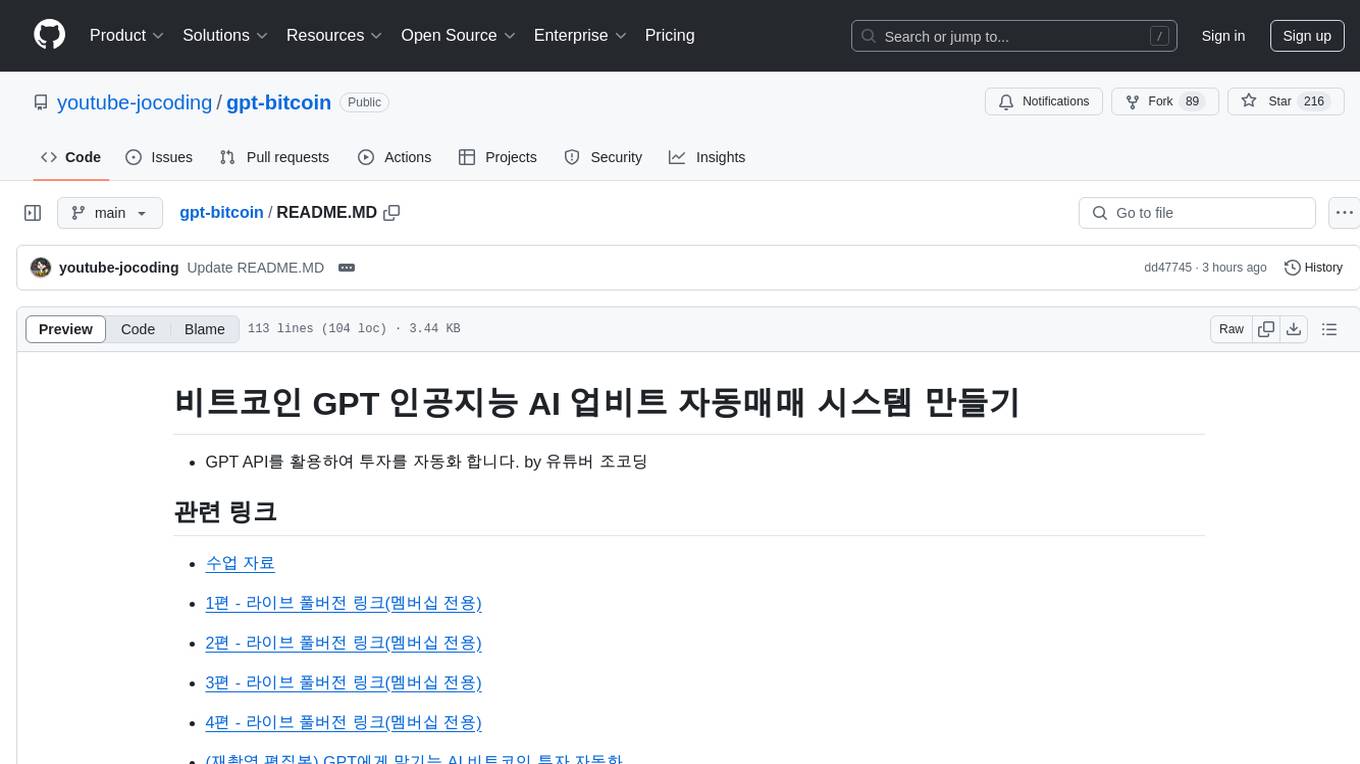
gpt-bitcoin
The gpt-bitcoin repository is focused on creating an automated trading system for Bitcoin using GPT AI technology. It provides different versions of trading strategies utilizing various data sources such as OHLCV, Moving Averages, RSI, Stochastic Oscillator, MACD, Bollinger Bands, Orderbook Data, news data, fear/greed index, and chart images. Users can set up the system by creating a .env file with necessary API keys and installing required dependencies. The repository also includes instructions for setting up the environment on local machines and AWS EC2 Ubuntu servers. The future plan includes expanding the system to support other cryptocurrency exchanges like Bithumb, Binance, Coinbase, OKX, and Bybit.
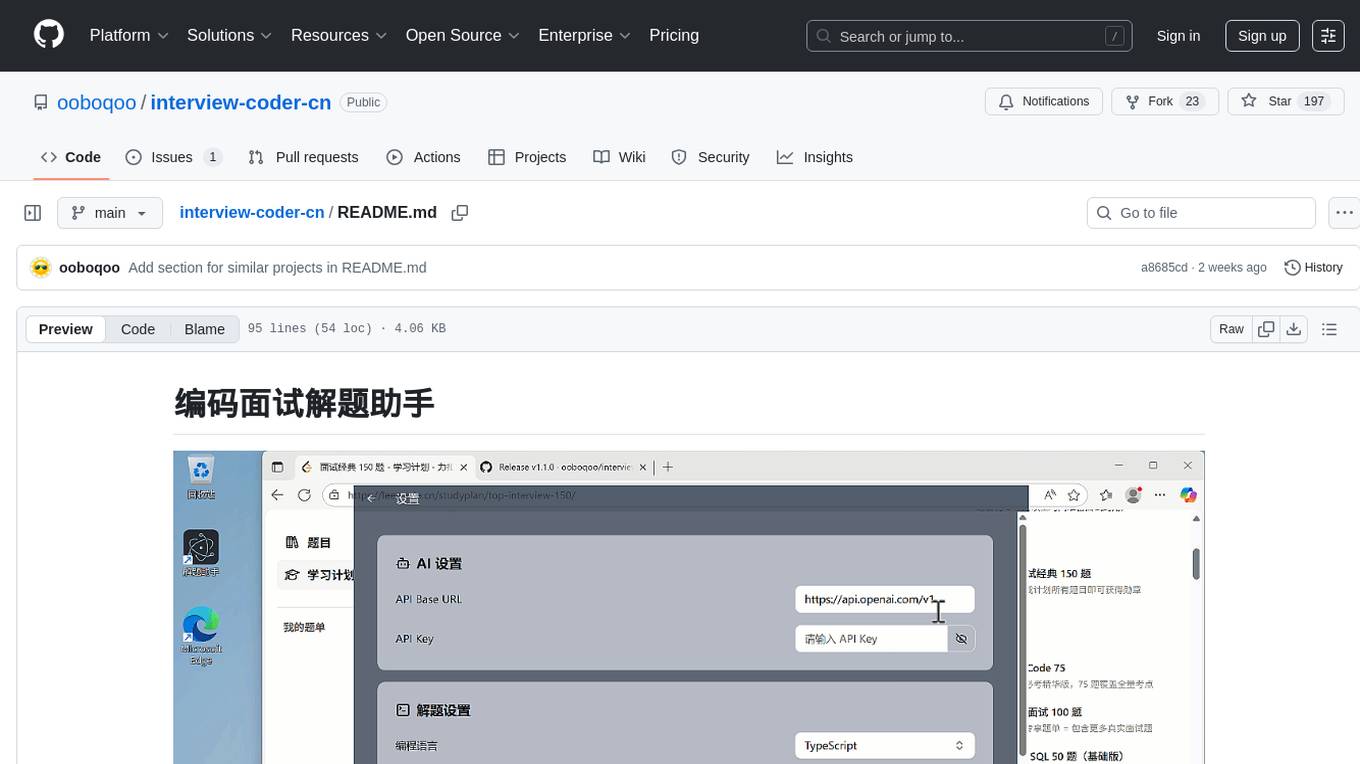
interview-coder-cn
This is a coding problem-solving assistant for Chinese users, tailored to the domestic AI ecosystem, simple and easy to use. It provides real-time problem-solving ideas and code analysis for coding interviews, avoiding detection during screen sharing. Users can also extend its functionality for other scenarios by customizing prompt words. The tool supports various programming languages and has stealth capabilities to hide its interface from interviewers even when screen sharing.
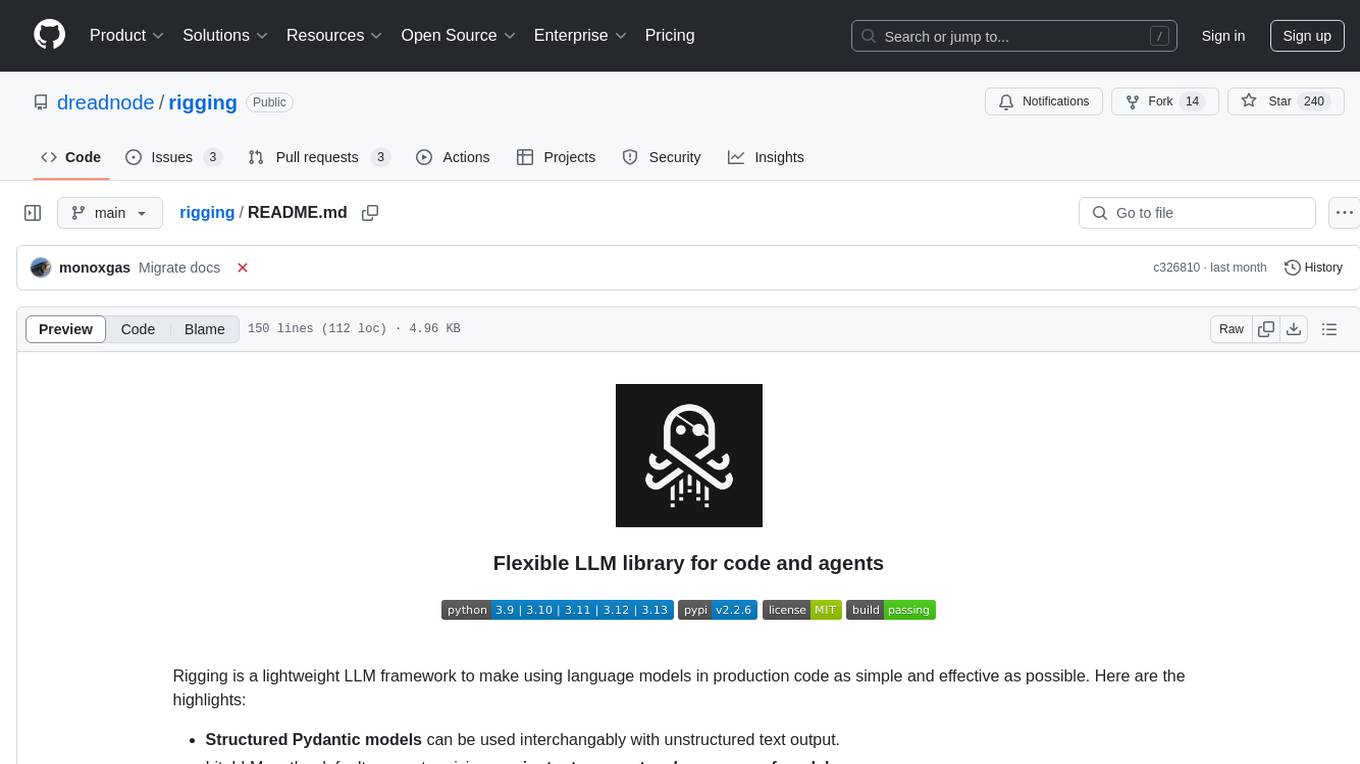
rigging
Rigging is a lightweight LLM framework designed to simplify the usage of language models in production code. It offers structured Pydantic models for text output, supports various models like LiteLLM and transformers, and provides features such as defining prompts as python functions, simple tool use, storing models as connection strings, async batching for large scale generation, and modern Python support with type hints and async capabilities. Rigging is developed by dreadnode and is suitable for tasks like building chat pipelines, running completions, tracking behavior with tracing, playing with generation parameters, and scaling up with iterating and batching.
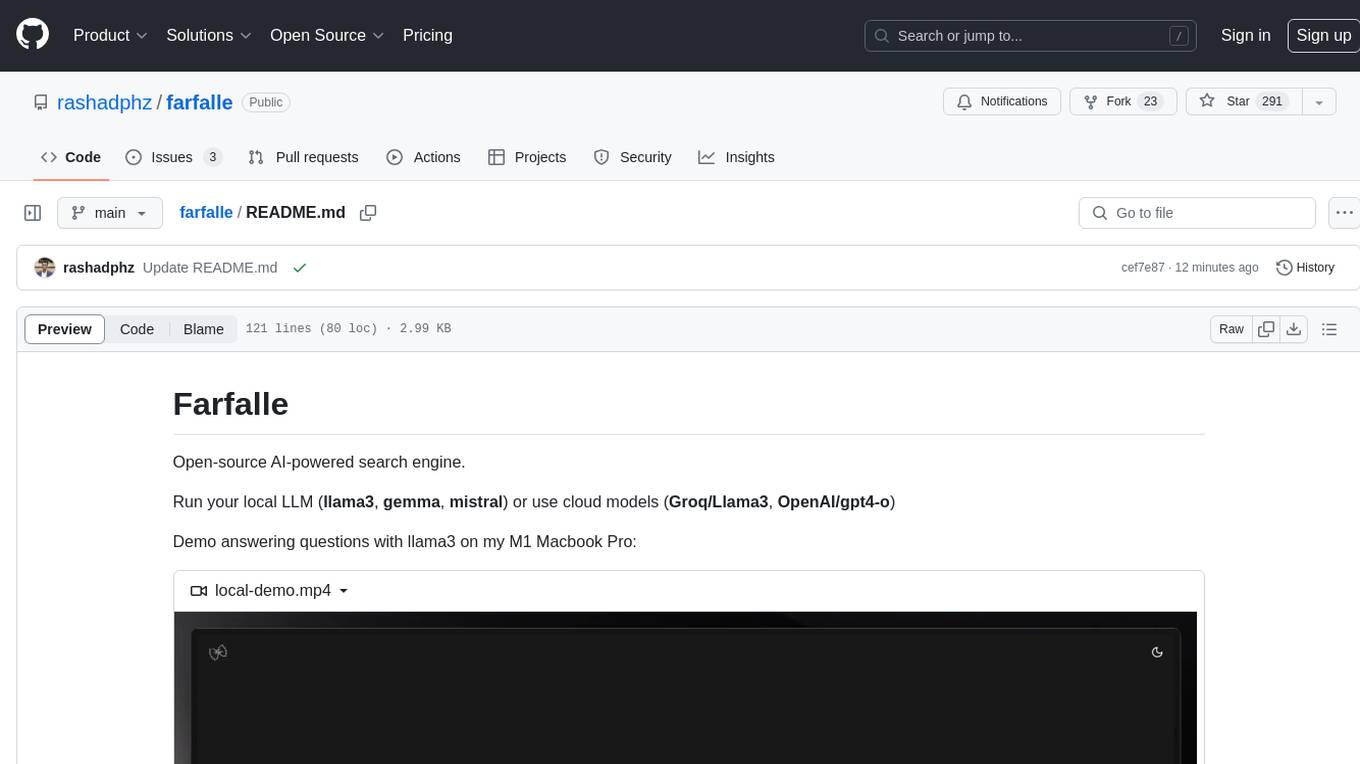
farfalle
Farfalle is an open-source AI-powered search engine that allows users to run their own local LLM or utilize the cloud. It provides a tech stack including Next.js for frontend, FastAPI for backend, Tavily for search API, Logfire for logging, and Redis for rate limiting. Users can get started by setting up prerequisites like Docker and Ollama, and obtaining API keys for Tavily, OpenAI, and Groq. The tool supports models like llama3, mistral, and gemma. Users can clone the repository, set environment variables, run containers using Docker Compose, and deploy the backend and frontend using services like Render and Vercel.
For similar tasks

behavior3lua
Behavior3Lua is a Lua framework for behavior trees in game AI. It provides a modified blackboard system where behavior trees are designed like code editors, allowing game designers to configure logic through editing trees. The framework offers various node types for creating complex AI behaviors, freeing game programmers from manual configuration. It includes composite, decorator, and action nodes, along with an API for creating and running behavior trees. The framework supports running states and provides an editor for visual tree editing. It has been successfully used in multiple projects for different game genres, enabling designers to create sophisticated AI and logic systems.
For similar jobs

promptflow
**Prompt flow** is a suite of development tools designed to streamline the end-to-end development cycle of LLM-based AI applications, from ideation, prototyping, testing, evaluation to production deployment and monitoring. It makes prompt engineering much easier and enables you to build LLM apps with production quality.
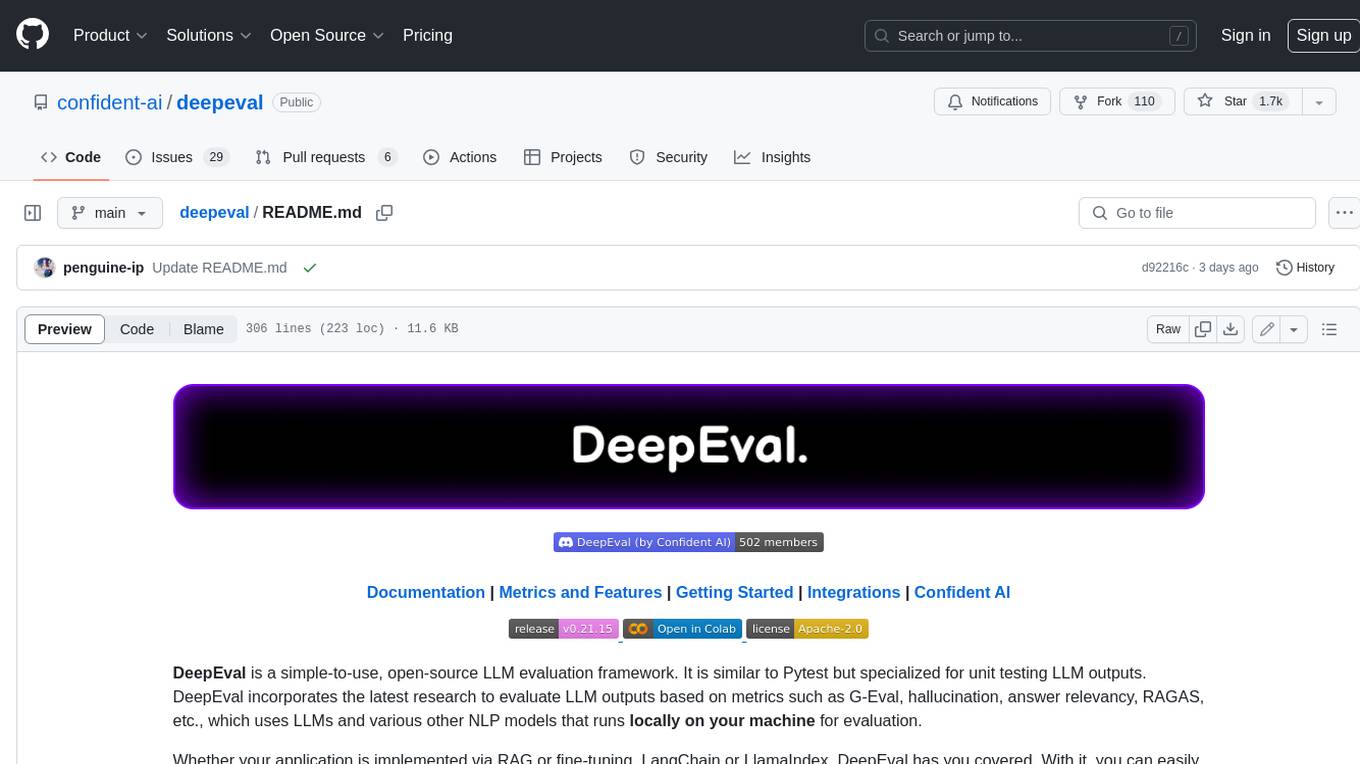
deepeval
DeepEval is a simple-to-use, open-source LLM evaluation framework specialized for unit testing LLM outputs. It incorporates various metrics such as G-Eval, hallucination, answer relevancy, RAGAS, etc., and runs locally on your machine for evaluation. It provides a wide range of ready-to-use evaluation metrics, allows for creating custom metrics, integrates with any CI/CD environment, and enables benchmarking LLMs on popular benchmarks. DeepEval is designed for evaluating RAG and fine-tuning applications, helping users optimize hyperparameters, prevent prompt drifting, and transition from OpenAI to hosting their own Llama2 with confidence.

MegaDetector
MegaDetector is an AI model that identifies animals, people, and vehicles in camera trap images (which also makes it useful for eliminating blank images). This model is trained on several million images from a variety of ecosystems. MegaDetector is just one of many tools that aims to make conservation biologists more efficient with AI. If you want to learn about other ways to use AI to accelerate camera trap workflows, check out our of the field, affectionately titled "Everything I know about machine learning and camera traps".
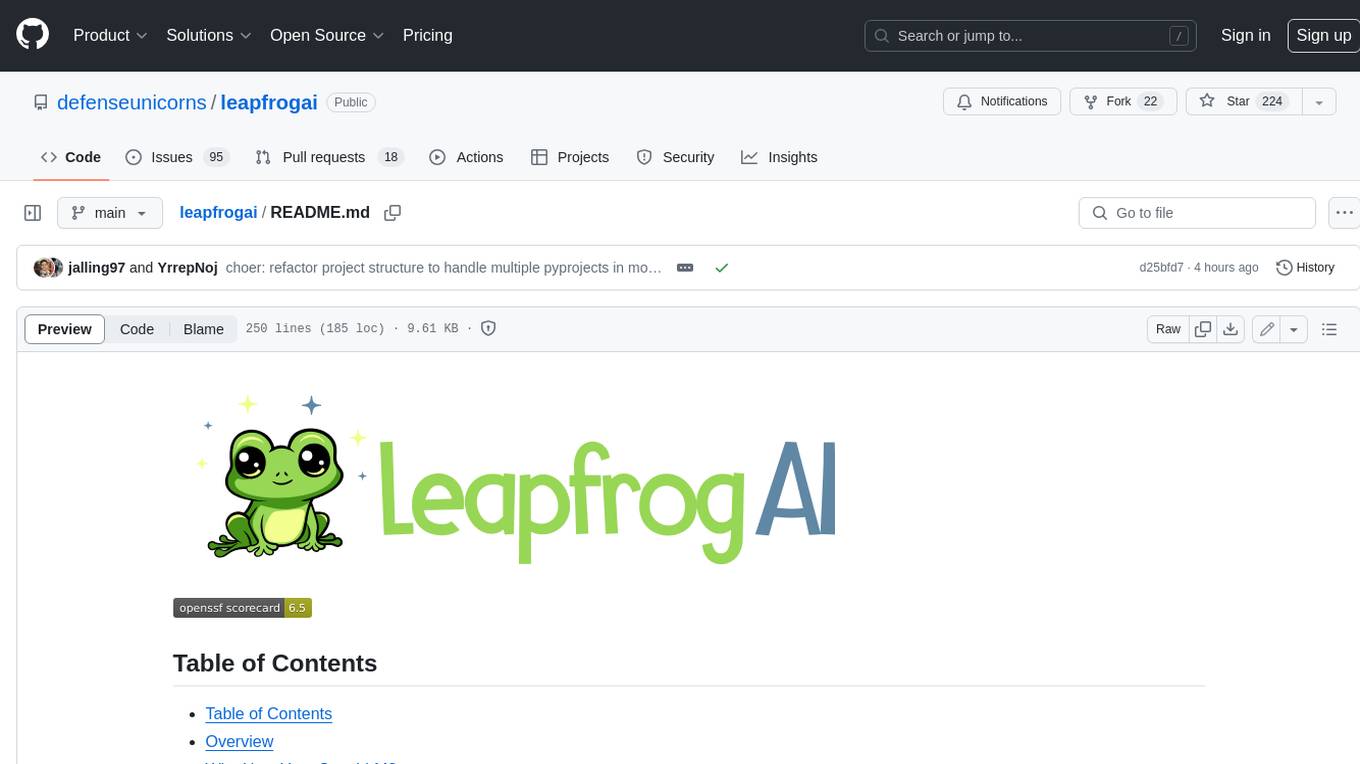
leapfrogai
LeapfrogAI is a self-hosted AI platform designed to be deployed in air-gapped resource-constrained environments. It brings sophisticated AI solutions to these environments by hosting all the necessary components of an AI stack, including vector databases, model backends, API, and UI. LeapfrogAI's API closely matches that of OpenAI, allowing tools built for OpenAI/ChatGPT to function seamlessly with a LeapfrogAI backend. It provides several backends for various use cases, including llama-cpp-python, whisper, text-embeddings, and vllm. LeapfrogAI leverages Chainguard's apko to harden base python images, ensuring the latest supported Python versions are used by the other components of the stack. The LeapfrogAI SDK provides a standard set of protobuffs and python utilities for implementing backends and gRPC. LeapfrogAI offers UI options for common use-cases like chat, summarization, and transcription. It can be deployed and run locally via UDS and Kubernetes, built out using Zarf packages. LeapfrogAI is supported by a community of users and contributors, including Defense Unicorns, Beast Code, Chainguard, Exovera, Hypergiant, Pulze, SOSi, United States Navy, United States Air Force, and United States Space Force.

llava-docker
This Docker image for LLaVA (Large Language and Vision Assistant) provides a convenient way to run LLaVA locally or on RunPod. LLaVA is a powerful AI tool that combines natural language processing and computer vision capabilities. With this Docker image, you can easily access LLaVA's functionalities for various tasks, including image captioning, visual question answering, text summarization, and more. The image comes pre-installed with LLaVA v1.2.0, Torch 2.1.2, xformers 0.0.23.post1, and other necessary dependencies. You can customize the model used by setting the MODEL environment variable. The image also includes a Jupyter Lab environment for interactive development and exploration. Overall, this Docker image offers a comprehensive and user-friendly platform for leveraging LLaVA's capabilities.

carrot
The 'carrot' repository on GitHub provides a list of free and user-friendly ChatGPT mirror sites for easy access. The repository includes sponsored sites offering various GPT models and services. Users can find and share sites, report errors, and access stable and recommended sites for ChatGPT usage. The repository also includes a detailed list of ChatGPT sites, their features, and accessibility options, making it a valuable resource for ChatGPT users seeking free and unlimited GPT services.

TrustLLM
TrustLLM is a comprehensive study of trustworthiness in LLMs, including principles for different dimensions of trustworthiness, established benchmark, evaluation, and analysis of trustworthiness for mainstream LLMs, and discussion of open challenges and future directions. Specifically, we first propose a set of principles for trustworthy LLMs that span eight different dimensions. Based on these principles, we further establish a benchmark across six dimensions including truthfulness, safety, fairness, robustness, privacy, and machine ethics. We then present a study evaluating 16 mainstream LLMs in TrustLLM, consisting of over 30 datasets. The document explains how to use the trustllm python package to help you assess the performance of your LLM in trustworthiness more quickly. For more details about TrustLLM, please refer to project website.

AI-YinMei
AI-YinMei is an AI virtual anchor Vtuber development tool (N card version). It supports fastgpt knowledge base chat dialogue, a complete set of solutions for LLM large language models: [fastgpt] + [one-api] + [Xinference], supports docking bilibili live broadcast barrage reply and entering live broadcast welcome speech, supports Microsoft edge-tts speech synthesis, supports Bert-VITS2 speech synthesis, supports GPT-SoVITS speech synthesis, supports expression control Vtuber Studio, supports painting stable-diffusion-webui output OBS live broadcast room, supports painting picture pornography public-NSFW-y-distinguish, supports search and image search service duckduckgo (requires magic Internet access), supports image search service Baidu image search (no magic Internet access), supports AI reply chat box [html plug-in], supports AI singing Auto-Convert-Music, supports playlist [html plug-in], supports dancing function, supports expression video playback, supports head touching action, supports gift smashing action, supports singing automatic start dancing function, chat and singing automatic cycle swing action, supports multi scene switching, background music switching, day and night automatic switching scene, supports open singing and painting, let AI automatically judge the content.